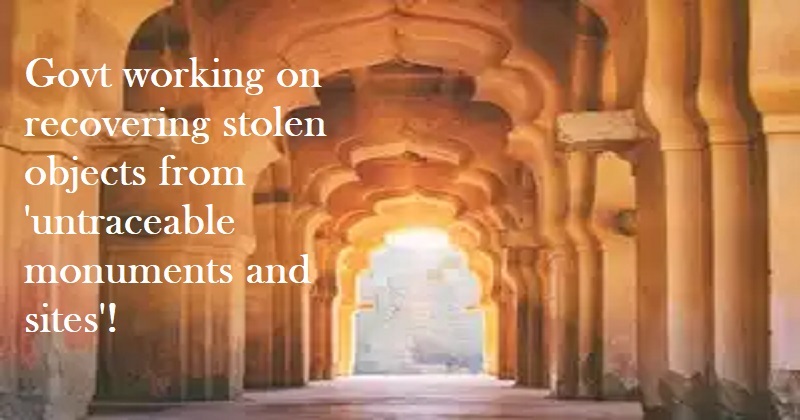
The country’s twenty-four monuments and sites are ‘untraceable,’ the Parliament was informed on Monday. In a written response to another Lok Sabha question, Union Culture Minister G Kishan Reddy stated that ‘it is estimated that 210 thefts involving 486 objects have been reported from centrally-protected monuments/sites located in 19 states/UTs since Independence’. He stated that the recovery of stolen objects is an ongoing process, with 91 objects recovered thus far.
What is ASI saying?
In response to another question, Reddy stated that the Archaeological Survey of India has surveyed 8,478 villages in the last eight years, with antiquarian remains discovered in 2,914 of them. According to Union Culture Minister G Kishan Reddy, the ASI ‘regularly conducts village to village surveys to explore and record the antiquarian remains’. The ASI protects 3,693 heritage sites in India, with 743 in Uttar Pradesh being the most.
In a written response to a question about the number of missing monuments in the country, he stated that ’24 monuments/sites are untraceable’. The minister also shared state-specific information about the ASI’s village-to-village survey, which was conducted from 2014-15 to 2021-22. According to the data shared, the ASI surveyed 8,478 villages during this time period, and antiquarian remains were discovered in 2,914 of them.
Out of the 8,478 villages surveyed, Punjab had the most (1,459), followed by Karnataka (933), and antiquarian remains were discovered in 130 and 806 villages, respectively. In response to another question, Reddy stated that 3152 villages were surveyed over the last five years (2017-2021), with 905 villages reporting antiquarian remains. In response to another question, Reddy stated that the ASI conserves 743 monuments in Uttar Pradesh, including 144 temples.
Monument preservation is an ongoing process. ASI performs work based on site requirements and available resources, he explained. The minister also stated that 1,224 monuments have cultural notice boards. In response to a question about the total number of ticketed and non-ticketed ASI monuments in the country, he stated that there are 3,693 monuments, sites declared as of national importance under the Ancient Monuments and Archaeological Sites and Remains (AMASR) Act, 1958, ‘of which entry fee is charged at 143 locations’.
In response to another question, he stated that monuments have been divided into two groups for the purposes of entry fees. Group ‘A’ includes World Heritage-listed monuments, while Group ‘B’ includes all other monuments. He added that Category ‘A’ has 20 entries, while Category ‘B’ has 123. On a separate question about whether ‘it is a fact that the Government is considering funding a project to study genetic similarities and differences in the DNA (genetic) profiles of India population groups,’ the minister replied, ‘no’.
‘Some vague reports of the Ministry of Culture conducting a study on ‘racial purity’ appeared in a few print media outlets, but were quickly debunked. A joint representation on the subject was also received ‘, he added In response to another question, Reddy stated that the Azadi ka Amrit Mahotsav has resulted in approximately 60,000 programmes being organised throughout India by central ministries or state governments.

Post Your Comments